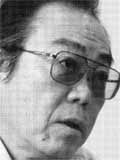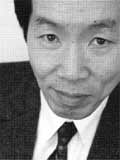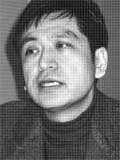Freeing of the Press
Back to Contents of Issue: April 2001
|
|
|||||||||||||
|
by Daniel Scuka, Chiaki Kitada, and Kyoko Fujimoto |
|||||||||||||
|
In many parts of the wired world, the Internet is having a profound effect on traditional media. News has become entertainment; information has become ubiquitous; and geopolitics has become a local event. We're each other's electronic next-door neighbor in this global village, and the Web is starting to intermediate most if not all aspects of our public and private interactions. Under the Net's intense 24/7, hyper-competitive pressure, book publishers, newspaper conglomerates, and radio and TV broadcasters in many countries are reinventing themselves as "online" media while struggling to make content delivered via the new electronic channels pay. New competitors, meanwhile, some lacking any real journalistic pedigree, handily rebrand themselves with the "media" adjective and wade Web-first into the market (Did someone say "AOL?").
In Japan, however, the transformation has only just begun. The traditional media giants still dominate through their almost-total control of audience mindshare and (still influential) old-media channels like broadcast, print, and publishing. The conglomerates also have an iron lock on physical distribution. Yet change has started. Japan -- home to one of the world's most literate populations -- is moving to the Web at a quickening pace. This country hosts the world's largest mobile portal, for instance, and broadband access is finally coming to the masses. There is no doubt Japan's media scene has already felt the first whisper-like flutterings of the chaos-theory butterfly born of the Net, and when the online tempest hits, the Japanese may just become the world's leading consumers of online media. THE POWER WIELDED BY old media in Japan hasn't diminished much in the last half-century. While technology and other agents of change have certainly reshaped how media makes its presence felt, the dominance itself has endured. Like the drones of Japan Inc.'s automakers, turning out ever more-perfect cars eagerly snapped up by consumers, the scribes of old media have generally perfected the industry of mass communication. The media's presence in Japan's culture has become omniscient, and old media holds sway over almost all aspects of masukomi (mass communications): advertising, entertainment, and news, not to mention alternative sources. Defined by the five national daily newspapers, the 65-odd larger regional papers, thousands of weekly and monthly magazines, the 70,000-plus new books published each year, and broadcast radio and TV, Japan's venerable media is everything that the Internet isn't. It's anonymous, paternalistic, and fixedly one-way. It's also strongly endorsed by the entrenched power elite. The five big newspaper-centric groupings (see table, page 37) dominate Japan's media scene, with their national distribution, tremendous brand images, and ownership of TV broadcasters, radio stations, English-language dailies, magazine and business publishing divisions (particularly in the case of the Nikkei), baseball teams, and numerous other enterprises. It's impossible to live anything but a hermit lifestyle here and not be exposed daily (hourly?) to news, advertising, or entertainment carried by one or more of the five giants. In addition to newspapers and commercial TV,* audiences voraciously snap up thousands of monthly and weekly magazines. There's an eclectic array available, offering a focus for every conceivable group. Presently, some 200 new titles each year are introduced into Japan's mature and sophisticated magazine market, according to Masahiko Motoki, head of publisher Kodansha's planning division and editor in chief of Web Gendai . He says that general-coverage magazines became popular in the 1950s, when Japan was still mired in post-war poverty. "People wanted to read about everything in one magazine; some of them were quite popular and influential," he says. "But today there are no influential magazines. Their lifecycle is getting shorter and shorter." Part of the reason is that advertisers are becoming more sophisticated in their demographic targeting, and they won't support a title that doesn't have a sharply defined audience. "There's no women's magazine published by our company covering a wide audience -- for example, women in their 20s to 40s," says Motoki. *There's one more broadcaster: NHK, the ever-popular, state-supported, non-commercial entity that dishes up the dry, authorative news that everyone actually relies on, as well as in-depth documentaries and national soul-warming fare, like the hugely popular taiga (epic) samurai dramas set in the Tokugawa era. Themes turn on concepts of betrayal, honor, and fidelity. NHK's morning drama programs, for example, focus on women establishing their own work and lifestyles. On the receiving end, Japan's largely heterogeneous population traditionally has demanded little variation in the fare dished up by the old media, the press component of which is "characterized by concise, factual and impartial reporting, avoiding interpretation, sensationalism and argumentation," according to Pippa Norris of Harvard's John F. Kennedy School of Government. But there are significant differences between media -- especially newspapers -- in Japan and elsewhere. For example, Japanese newspapers are not as open to their audience as those in the US and other countries. Keiichi Katsura, a media expert at the Tokyo University of Information Sciences, explains that while American newspapers' letters sections serve as forums for dialogue between the editors and readers, Japanese readers' tend to submit their personal views simply to have them publicized. Also, when the media covers accident or crime victims excessively, Japanese readers tend to expect the government to do something to control the press rather than show concern about violating freedom of expression. This year, the Diet will be debating several new laws targeting protection of youth and privacy that may also have wide-ranging implications for press freedom. Several of these measures enjoy significant support. Editorially, there has always been at least some self-censorship. The top-tier national dailies rarely or only briefly cover certain topics, and mainstream editors generally refrain from taking unduly outspoken positions on any topic. It's left to the second- and third-tier weekly tabloid-style magazines (including Focus and Flash ) to report the most salacious details of scandal among the political and social elite. Newspapers, by and large, offer sanitized, uncontroversial information that, while not always the whole story, at least provides reliable facts that everyone can trust. But "the old system is wearing out," says Katsura. "It's not just technology that is pushing the change, but also people's vision of the relationship they want to have with the media."
In addition, audiences here, long constrained by old media's iron grip on the production, distribution, and sale of anything printed on dead trees, may be ready to embrace the Net's ability to bypass physical distribution of information altogether. Through years of effective lobbying, the publishing industry has won wide-ranging exemptions from Japan's antitrust and other commerce laws. Under the well-known Saihan Seido regulations, for example, price-fixing is not illegal, and prices for books, magazines, and periodicals are kept uniformly high. Overall, old media has been an active participant in what some long-time Japan watchers have described as a cartel of the mind, a phrase coined to describe the active structural exclusionary practices -- together with a more subtle psychological and cultural insularity -- that have maintained media power in the hands of the few. Government ministries, major corporations, industry associations, and political parties (even local fire and police stations), for example, all maintain their own kisha (journalist) clubs, to whose members news releases, insider info, and invitations to closed press conferences are preferentially channeled. Membership is considered a de facto prerequisite to obtain the information journalists need to provide adequate coverage -- and that media companies need to compete. A journalist violating an embargo, naming a source, or breaking any of the other kisha club rules faces sanctions, including suspension of membership (and hence being cut off from all information) or expulsion from the club altogether. "Journalists risk being expelled if they write negative articles, so they tend not to, and a lot of reporting tends to look alike, regardless of the publisher," says Kodansha's Motoki.
Nonetheless, elitist thinking continues to animate the kisha system. Freelancers (Japanese and foreign alike) and new dot-com media are often excluded, for example. The arguments over the kisha club system may be moot: many have said that the kisha are already becoming irrelevant in an age of constant information flow, and some predict their eventual demise. Nobuo Ikeda, professor at Tokyo's Center for Global Communications (GLOCOM), says, "The kisha club system will not disappear in the near future, because it protests mass media's vested interests within the inefficient infrastructure system. But the Internet is applying pressure to the system." Despite that pressure, the sheer size of Japan's media conglomerates ensures that change, if any, occurs only glacially, and that power continues to reside with the established players. "Old media such as newspapers and TV have established the system to suit [themselves]," says J-CAST's Ninagawa. "Most of the TV stations are controlled by newspaper companies, so the newspaper companies control most of the country's media; compared to the US, old media has much stronger power." With the newspapers playing such a significant role, many say that old media overall is trapped by its massive size, entrenched way of working, self-created delusions, and head-in-the-sand approach to digitization. Considering the interconnectedness of Japan Inc., it's no surprise that this situation is little different than that faced by the banks, the construction industry, and other long-time arbiters of Japan's body politic. Writing in these pages last year, Steven Herman, several-times chairman of the Foreign Press in Japan, stated that few Japanese media executives realize the dangers. "For the most part," he wrote, "their primary newspaper and broadcast businesses are trying to grab the same core audience while technological, societal, and demographic shifts result in falling circulation and ratings."
Nevertheless, Japan's viewers, readers, and surfers are increasingly seeking out the content they want, delivered when they want it, by whatever means they desire. For example, as observers of the financial industry here note, individual online investing has prompted many Japanese to seek out better sources of financial, corporate, and business information. Japan's brokerage industry has seen spectacular growth since the deregulation of fees and the launch of online trading in 1999. Online trading accounts, most owned by individual investors, will soon account for some 50 percent of all trades. As the economy continues to flounder, corporate cross-shareholdings -- long criticized as the glue that has kept share prices high, share numbers low, and corporate accountability in the dark -- are starting to unwind. As more individual shareholders enter the market, they will demand clear and full disclosure, and the corporations will have to react. As individual shareholders account for a growing percentage of all shareholders, some corporations are already worried about being able to gather the legally required quorum for shareholder meetings, and are starting to boost their IR efforts.
Japan's Internet and other new media have already increased the number of content channels the public can access, and all relevant metrics (page views, banner click-throughs, broadband subscriber numbers) are pointing skyward. In addition to the news, programming guides, and entertainment sites hosted by old media (all five conglomerates plus the TV stations have sites of varying quality, as do many magazines), the public can access an increasing number of content sites put up by freelance journalists, writers, civic groups, and, of course, new Web-only content producers. Email magazines are hugely important, and some Web journalists started out by simply sending their own newsletters to friends and colleagues, relying on word-of-mouth and solid reporting to boost readership.
In addition, new content channels like Web radio, wireless Web and email, and cable, digital broadcast, broadcast satellite (BS), and communications satellite (CS) TV are all gaining ears and eyes. The wire services are actively looking to expand the type of content gathered (to include TV, images, and non-business news) and increase modes of distribution. Reuters Tokyo, for example, is repurposing Japanese-language general and business news onto Web portals like Yahoo Japan, and has set up new partnerships with content resellers. Part of new media's potential for success lies in the concentration of control that old media has exercised: to establish a new independent voice, there are only a few targets that need be hit. Also, old media's move to the Web has been feeble, and few think that the conglomerates can "get" the Net. Sites operated by the Asahi, Nikkei, and some other newspapers may get lots of traffic, but much of the content comprises stale reprints of stories already run on paper. Most of the sites published by major TV media are thin on content. "Their focus is not journalism or entertainment; they can't provide any kind of Web-appropriate content," says Tokyo University's Mizukoshi. "Their sites are filled with information you can find in TV guides. CBS and CNN do a much better job. The Japanese TV companies don't have a clear vision about what they want to do in the coming digital age." In other words, smaller and/or faster publishers of all stripes seem better able to understand the new electronic channels and use the media more effectively. "In the past several years, the Internet's role has been to [disseminate] the most up-to-date information, a role traditionally played by the newspapers," says Atsuo Fujimura, CEO of online publisher atmark IT Corp. and former editor in chief of tech magazine ASCII NT. Web and email newsletters are good examples of "the power that is breaking the limits of traditional media," he says. Fujimura predicts that once the Internet has taken root, it will also shake up the magazine industry. "In the highly specialized IT area, people used to get information from magazines and then would go to books for more information. But now they tend to go to the Web first, and magazines are losing their position as the first resort," he says. Not only have magazines been the first component of old media to be shaken up by the Net, but they are in fact helping lead the assault. While most expect the newspapers and broadcast media to stumble on and persevere in one form or another, magazines -- especially computing-related titles -- have already begun to morph into hybrid paper/online publications in order to meet demands by their many niche audiences for customization. "Magazines are more flexible in terms of embracing digitization," says academic Mizukoshi. "Several have already come up with new [electronic] formats."
atmark IT, which specializes in IT-related content, is also trying to make its vision of online publishing a reality and is trying to be more than just a tech news channel. Fujimura saw that in traditional IT publishing, the publisher provided the tech information while IT hardware and software vendors provided the actual solution. "On the Internet, we can provide the solution part that traditional media companies couldn't provide," says Fujimura. Whether this is good for editorial integrity is another question. (See sidebar on page 33 for more on online journalism.) Nikkei BP publishes a range of IT- and Net-related magazines, each carefully tailored to a specific demographic. Most titles have their own Web site offering repurposed and Web-only content, as well as links to shopping and other online resources. The publisher aims to keep audiences happy through vertical offerings of specific news and information. Titles include Nikkei NetBrain, Nikkei Computer, and Nikkei Net Business -- several dozen in all. Some -- like Nikkei Java Review -- are pure Web publications, giving support to the contention that the Internet is a natural home for niche or narrow-audience publishing. "Our Web sites sometime beat the newspapers on tech news," says one senior editor (who asked to remain anonymous), referring to last November's recall of Transmeta's Crusoe mobile processor chips. The biggest challenge is that in the Web content business, nobody wants to pay. "You have to do good reporting in order to differentiate yourself," he adds. Plans for the Nikkei BP sites include rebuilding them as comprehensive portals, not unlike the Earthweb family of developer and IT sites in the US.
Weekly ASCII editor in chief Fukuoka points out other advantages of the Web. He says he's looking at the concept of an "Internet broadcasting station" that would channel far more than just text at the viewer. "When we have information to pass on to our readers, viewers, or listeners, we would like to do so in the most appropriate format," he says. ASCII launched a Web portal last May called Wam Online. Based on the popular computing print magazine Weekly ASCII, it includes WamWam, a daily email newsletter; Wam Money (online trading information, trading games, and more); itv24.com (produced by ASCII partner The Works), whose programs include variety, drama, sports, and music; and radi@, which includes music, radio drama, and talk shows. "Some people say nobody would watch a small-screen Internet TV station if the big broadcasters move online and make their own TV programs. But that's not going to happen. Internet broadcasting is different from regular TV, just like movies and TV programs are different," says Fukuoka, implying as many have that the traditional broadcasters will find it tough if not impossible to adapt to the new electronic channels. Of course, maybe they're not trying to, and are relying on viewer passivity for guaranteed ratings into the future. "Broadcasting media is strong because the information just comes to you. You don't have to take any action to watch TV, besides turning it on," says Impress' Ogawa. Taking the Net transformation one step further, Kodansha's Gendai magazine has split. There are now two distinct versions: the traditional print weekly, and Web Gendai online. There's only a 5 percent overlap of content, meaning that the content on Web Gendai is almost entirely different from that in the print magazine. The site has already achieved some impressive numbers: its staff consists of five full-time and some 25 part-time employees vs. the print version's 35 full-time and approximately 65 part-time, and Web Gendai gets 400-500,000 visitors per day. Web Gendai 's Motoki says that general paper magazines, especially those targeted at males, are on the wane, as young people have become more interested in magazines focusing on specific topics. But it wasn't just marketing considerations that drove Web Gendai to go Web. It's difficult to launch new paper titles, Motoki explains, due to printing and distribution costs and high return rates for unsold copies. "The main reason we started Web Gendai was to take a new approach to magazine publishing on the Web; we wanted a paperless, bookstore-free Internet media," says Motoki, "And Web Gendai is the only general information and content magazine that has gone substantially electronic. I expect others will follow us this year."
BUT WHILE ONLINE PUBLISHERS here hope the Web site/print magazine combination is a good business model that provides a great platform for offering enhanced electronic content, profitability is still a challenge. Many think that electronic media will eliminate the cost of paper-based printing and distribution. "Once there is a successful business model, many will shift to Web publishing," says atmark IT's Fujimura, adding, "Our revenue sources are sponsors and banner advertisements -- we're receiving more ad revenue than expected and [this year] we're likely to reach the target." Kodansha's Motoki is also thinking about new models for new media, and although Net advertising has been expanding its share of the overall ad market for the past several years, Motoki is acutely aware that its size is still small. Part of his plan includes capitalizing on membership and subscription-style revenue by offering not only news and information, but also everything from fortune telling and photo sharing to downloads of popular print graphics and audio files of rakugo -- popular comedy monologues. But he knows Kodansha can only achieve the new model if it's got the audience numbers locked up, and on the Net at large that's tough to do.
But even then, Motoki admits that finding adequate content revenues will still be tough. Undaunted, he's thinking beyond the near-term, to when Kodansha can build sites like Web Gendai into a megaportal, offering multi-repurposed content via Web, BS, CS, wireless, and other echannels. "By paying a few thousand yen per month, customers could enter into a Kodansha world and get access to any kind of book, magazine, or manga that we own," says Motoki, adding, "I hope to see this in 2005." By then, he says, print-on-demand will become common, with bookshops and convenience stores serving as the download delivery point. In such a Net-enabled, print-on-demand future, Japan's existing print distribution and pricing regulations (the Saihan Seido), as well as the multiple layers of distributors and retailers, should become more or less irrelevant. Even the Saihan Seido's beneficial features -- ensuring equal news and information distribution to Japan's extensive rural and mountainous areas -- will be taken over by broadband and cheap, ubiquitous access. Officially, Saihan Seido regulations now cover distribution in three areas: books, newspapers, and CDs, but with CDs, the system is, in practice, already more or less defunct. For book publishing, it's starting to fall apart little by little, with the emergence of discount bookstores, like the "Book Off" chain, and secondhand retailers. ASCII, with its eNovel service (text delivered via PDF-formatted file), offers another nail for Saihan Seido's coffin. "Only the newspapers are strongly resisting change," says Motoki. The old regulations, like old media newspapers themselves, will probably never be repealed -- they'll just fade away. NEW MEDIA IN JAPAN already looks and feel radically different than the old. Delivered by electronic channels, new media tends towards one-to-one interactivity and is immediate, personal, and private. Increasingly, content will be packaged for highly specialized, intimate audiences and delivered directly in real time. "There may only be a few thousand readers who really want to read cutting-edge information on their specialized topic. You can't publish a paper magazine with such a small number of readers, but on the Web, it's possible," says Fujimura of atmark IT. "In mass media, branding counts for a lot," says Impress' Ogawa. "But the influence of big brand names has been changing." The Nikkei, for example, a well-known brand among middle-aged readers, tried to publish game magazines through its Nikkei BP arm, but hasn't been successful. "For young gamers, magazines from ASCII [Editor's note: actually, from EnterBrain, ASCII's game publishing subsidiary] would be a better brand. It is important to have that kind of specialty in publishing companies," he says.
Fukuoka of ASCII has thought a lot about the text-centric nature of the Web to date, and he's pushing for a broader definition of online publishing, getting away from only text and static images. He cites the example of the perennially popular manga comic books in Japan. Some pages end with uncompleted action, and the reader is drawn to turn the page to find out what comes next -- often a surprise that takes the story off in an unexpected direction. In other words, and at a very fundamental level, manga are carefully contrived by cartoonist and writer to be fun, enjoyable, and compelling. "It's no fun if there is no page to flip and you see everything on one big page," says Fukuoka. He says novelists and magazine editors use much the same technique, and are careful in fitting text onto the page because they want to show additional meaning. "This is Japanese culture," he adds, concluding, "That's probably why many people say Japanese magazines look better than magazines from other countries." The company that figures out how to transfer compelling elements of traditional paper-based publishing onto the Web stands to make a lot of money, for Japanese readers, with their ideogram-based writing system, are highly design- and graphic-centered. Impress president Keiichiro Tsukamoto is also developing an electronic portal not unlike ASCII's Internet Broadcasting Station. Tsukamoto's "digital station" concept will employ sophisticated content management software that lets writers and editors file stories to more than one media channel at a time, achieving effective repurposing of content. "[Old] mass media can produce content for a single channel, like a newspaper, for example, but it can't produce content for multiple uses, like TV and Web," he says. Impress will adopt a US-made content management package and use it on two of the firm's 12 Watch-series Web sites. Tsukamoto is enthusiastic about the boost in productivity automated content management will bring. He says that with Impress' current system, creative staff have to have an idea of where the story will be published. If it's to run on three different "channels," it has to be edited three times. This production process takes up a lot of time, and he says that Japan is behind in this area of automation. "In the States, this software appeared in 1996 and now most major companies on the Net have started using it, including BMW and AT&T," he says. But content management allows for more than just practical efficiency savings. Tsukamoto's digital station will ultimately include facility management, automatic advertisement delivery, and other features aimed at achieving customization that has until now been impossible. "Ultimately, this will lead us to personalization. We are currently in a transition stage from mass media to middle-size media, and then to personalized media, which could take about 10 years," he says. Does personalization mean customization? "Yes. Customers have individual tastes and hobbies and want more information about them, but don't want unrelated information," he says. "But audiences are still not used to personalized media. They get tired of being asked what they want each time. It's sometimes easier for them to have a set menu rather than a la carte." And those who doubt how well this could work need only look at Japan's run-away success in wireless access services. Many think the public has taken to i-mode and the other such networks precisely because the content is neatly organized into a pre-selected and pre-screened menu, which, as Tsukamoto says, is extremely convenient for the viewer. JAPAN HAS STARTED DOWN the path to its Internet future, and we've only just begun to see the freeing of the press. No one knows what the final outcome will be, but at least some of the threads of change are already apparent.
Another animus of change will be the public's increasing desire to obtain information of all types -- not just news and entertainment -- electronically. It's already possible to order certified copies of certain government documents (like residency certificates) from online kiosks, and several levels of government and the bureaucracy are actively discussing cybergovernment initiatives. When the pols and paper pushers final come up with a plan, they'll find no lack of citizens willing to go online to obtain service and fetch information. During last November's rebellion led by Liberal Democratic Party secretary-general Koichi Kato (an abortive attempt to unseat Prime Minister Mori), Kato's Web site received 100,000-plus visits and some 15,000 email messages voicing support for his move. Speaking at the Foreign Correspondent's Club in Tokyo in February, Oki Matsumoto, founder of Monex, one of Japan's most successful online brokers, said that the brokerage industry and corporate Japan need to achieve credibility in order for individual investors to move their savings into the market. And to achieve credibility, the public has to see disclosure, and lots of it. "Japanese newspapers have no perspective," he added. "Public opinion is not made by the public; it's made by the media. I want to see perspective from information providers -- and opinion, right or wrong." Online and new media can offer that perspective, and will be prime enablers of corporate disclosure. The advent of broadband will also grab old media by the throat. Telcos, ISPs, and new access brokers here are all competing to offer flat-rate cable, xDSL, and fiber optic connections to the public, and although it's still in the early days, the public seems to be grabbing all the bandwidth it can. Broadband will make the Internet, already established as a new fourth media, the conduit for multiple new media channels, blurring the traditional media boundaries established by paper and broadcast. Impress' Internet TV and ASCII's radi@ and iTV24 are prime examples of this trend. And mobile operator NTT DoCoMo is now Japan's largest ISP (through its i-mode service) and recently entered a capital tie-up with AOL Japan. The combination of wireless access (predicted by at least one media insider here to achieve substantial penetration of Japan's voting-age population in the next few years) and AOL-Time Warner's content-generating savvy could create competition that leaves Japan's old media conglomerates choking in electronic dust. Finally, consider that the cost for information infrastructure, and full-time access to the Net, are coming down in this country. As experience with the ISP and data-hosting business on the wired Net has shown, providing access to content eventually becomes a zero-margin commodity. Have the old media conglomerates started thinking about what kind of content they will provide in an era when super-fast broadband access becomes universal and virtually free? It doesn't appear so. "If you want to really change this society, think about what kind of business you can do in the post-Internet era of unlimited communications," advised venture incubator Sunbridge president Allen Miner at a venture forum here a few weeks ago. He added: "[Don't] get caught up with [the present] Internet, because [boundless] communications will start happening in just a few years." GLOCOM's Nobuo Ikeda echoes this prediction. "Infrastructure costs in the information industry could come down to almost zero in the future," he says, adding, "Competition is happening at the content level. Nobody will pay attention to boring information -- only media with quality will be able to survive." Japan's old media, tightly wedded to entrenched ways of thinking and fatally entangled in media channel-specific ways of operating, are ill-suited to the new realities. New players who understand that boundaries between media channels have started to blur will flourish. "Now that the boundaries have started to disappear, the reputation of the author will become key," says professor Ikeda. Disclosure, competition, personalization, and quality: these are all features that Japan's media has long lacked. The Internet is fostering their growth here, and when the media has fully embraced these elements, Japan will have started the evolution into a more informed, mature democracy. Japanese media will also see a new factor: diversity. "What we are seeing now is constant expansion of the media industry's horizons," says Ikeda. "New models are being born on the Net. The most important element for the media's future is diversity. It's unimaginable to think of everyone using only i-mode or Playstation2. The diversity of media will keep growing -- many individual media companies will be weeded out, but new media will continuously emerge." |
|||||||||||||
Note: The function "email this page" is currently not supported for this page.











